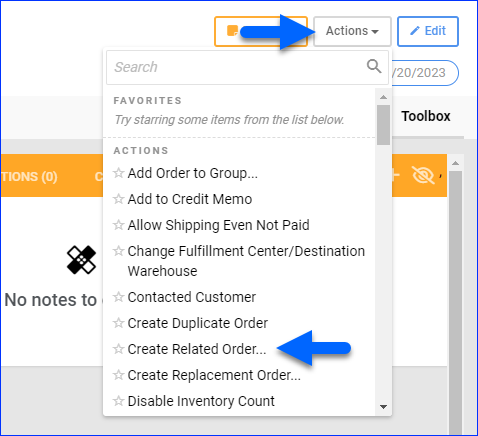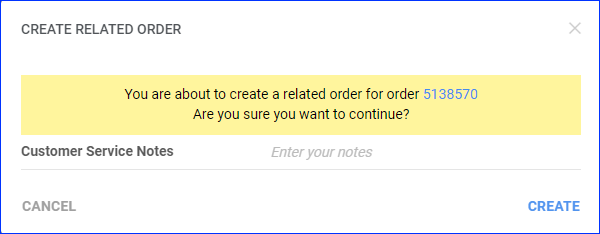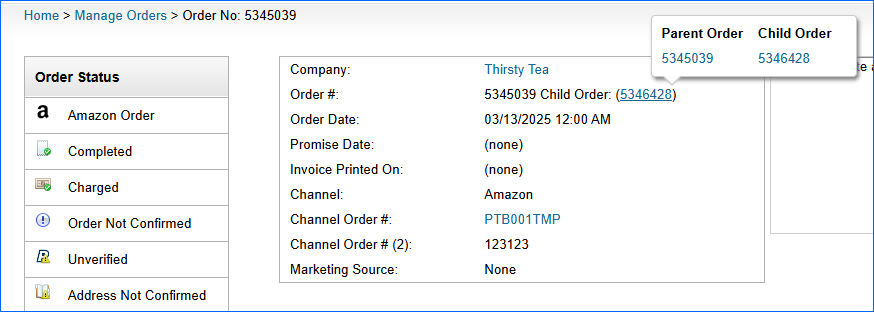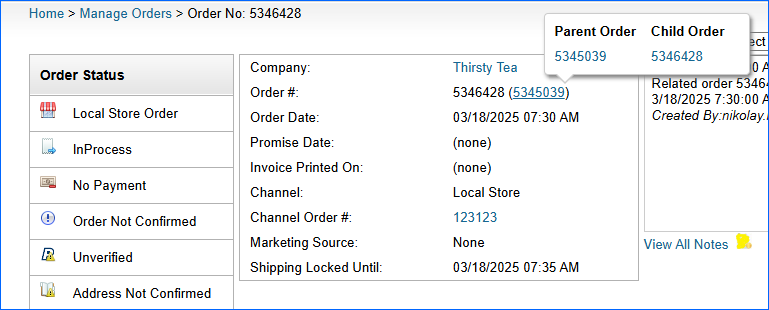Overview
Sellercloud lets you create Related Orders linked to previous purchases, improving organization and management. Here are some examples of scenarios in which you may want to use this feature:
- Incorrect Items – A customer receives the wrong item but chooses to keep it and acquire the correct one as well instead of requesting a replacement.
- Post-Sale Purchases – A customer realizes they need additional components (e.g., screws, manuals, or spare parts) after finalizing their initial transaction.
- Add-Ons or Upgrades – A customer decides they want an add-on or upgrade for a previously ordered product, such as extra accessories.
- Bundled Items – A customer who bought a bundled product now wants another single component.
In this article, you will learn how to create and manage related orders and configure related settings.
Manage Related Orders
The following sections address managing related orders.
Create a Related Order
To create a related order:
- Go to the Order Details Page.
- Click Actions and select Create Related Order.
 You can restrict access to the Create Related Order action with a PIN by enabling the Client Setting Require Security PIN To Create Related Order.
You can restrict access to the Create Related Order action with a PIN by enabling the Client Setting Require Security PIN To Create Related Order. - Optionally, enter Customer Service Notes. These notes will appear in the Customer Service Order Notes on the related Order Details Page.
- Click Create.

- Click View Related Order.
Search Related Orders
Related orders appear in the Related Orders panel on the parent’s Order Details Page, listed as Child Order.
Similarly, when viewing a related order, you can see the original listed as the Parent Order.
In addition, related orders have the following message in the Notes:
- “Related order [Order Number] created by [[email protected]] on [Date and Time]”
Related Client Settings
The following Client Setting affects related orders:
- Require Security PIN To Create Related Order – Require a PIN to create related orders.
Overview
Sellercloud lets you create Related Orders linked to previous purchases, improving organization and management. Here are some examples of scenarios in which you may want to use this feature:
- Incorrect Items – A customer receives the wrong item but chooses to keep it and acquire the correct one as well instead of requesting a replacement.
- Post-Sale Purchases – A customer realizes they need additional components (e.g., screws, manuals, or spare parts) after finalizing their initial transaction.
- Add-Ons or Upgrades – A customer decides they want an add-on or upgrade for a previously ordered product, such as extra accessories.
- Bundled Items – A customer who bought a bundled product now wants another single component.
In this article, you will learn how to create and manage related orders and configure related settings.
Manage Related Orders
The following sections address managing related orders.
Create a Related Order
To create a related order:
- Go to the Order Details Page.
- Click Select an Action, select Create Related Order, and click Go.
 You can restrict access to the Create Related Order action with a PIN by enabling the Client Setting Require Security PIN To Create Related Order.
You can restrict access to the Create Related Order action with a PIN by enabling the Client Setting Require Security PIN To Create Related Order. - Optionally, enter Customer Service Notes. These notes will appear in the Customer Service Order Notes on the related Order Details Page.
- Click Continue.
Search Related Orders
Related orders appear in the Related Orders panel on the parent’s Order Details Page, listed as Child Order.

Similarly, when viewing a related order, you can see the original listed as the Parent Order.
In addition, related orders have the following message in the Notes:
- “Related order [Order Number] created by [[email protected]] on [Date and Time]”
Related Client Settings
The following Client Setting affects related orders:
- Require Security PIN To Create Related Order – Require a PIN to create related orders.




